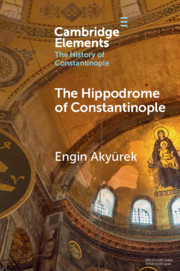Description
The Hippodrome of Constantinople
Elements in the History of Constantinople Series
Author: Akyürek Engin
Language: English
Subject for The Hippodrome of Constantinople:
Approximative price 22.46 €
In Print (Delivery period: 14 days).
Add to cart
Publication date: 10-2021
Support: Print on demand
Support: Print on demand
Description
/li>Contents
/li>
The Hippodrome of Constantinople was constructed in the fourth century AD, by the Roman Emperor Constantine I, in his new capital. Throughout Byzantine history the Hippodrome served as a ceremonial, sportive and recreational center of the city; in the early period, it was used mainly as an arena for very popular, competitive, and occasionally violent chariot races, while the Middle Ages witnessed the imperial ceremonies coming to the fore gradually, although the races continued. The ceremonial and recreational role of the Hippodrome somehow continued during the Ottoman period. Being the oldest structure in the city, the Hippodrome has witnessed exciting chariot races, ceremonies glorifying victorious emperors as well as the charioteers, and the riots that shook the imperial authority. Today, looking to the remnants of the Hippodrome, one can imagine the glorious past of the site.
1. Introduction; 2. History of the Hippodrome; 3. The Architechture of the Hippodrome; 4. Monuments and Sculptures; 5. The Hippodrome as the Ceremonial Setting of the City; 6. Circus Factions and Chariot Races; 7. The Church's Opposition to the Chariot Races; 8. The Hippodrome during the Ottoman Period; 9. Archaeological Research and Excavations Conducted in the Hippodrome and Vicinity; Bibliography.
© 2024 LAVOISIER S.A.S.
These books may interest you

The Statues of Constantinople 22.46 €



